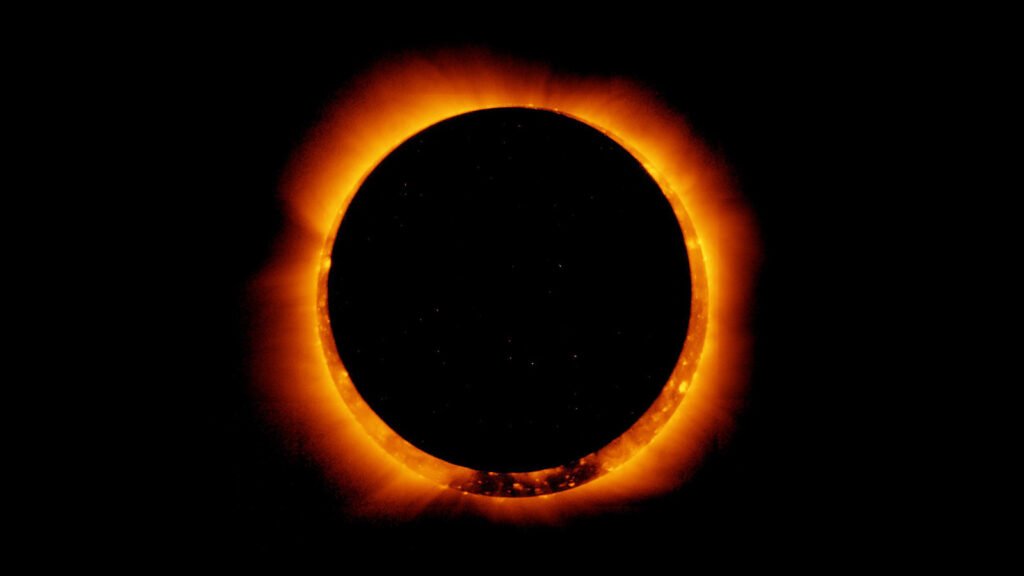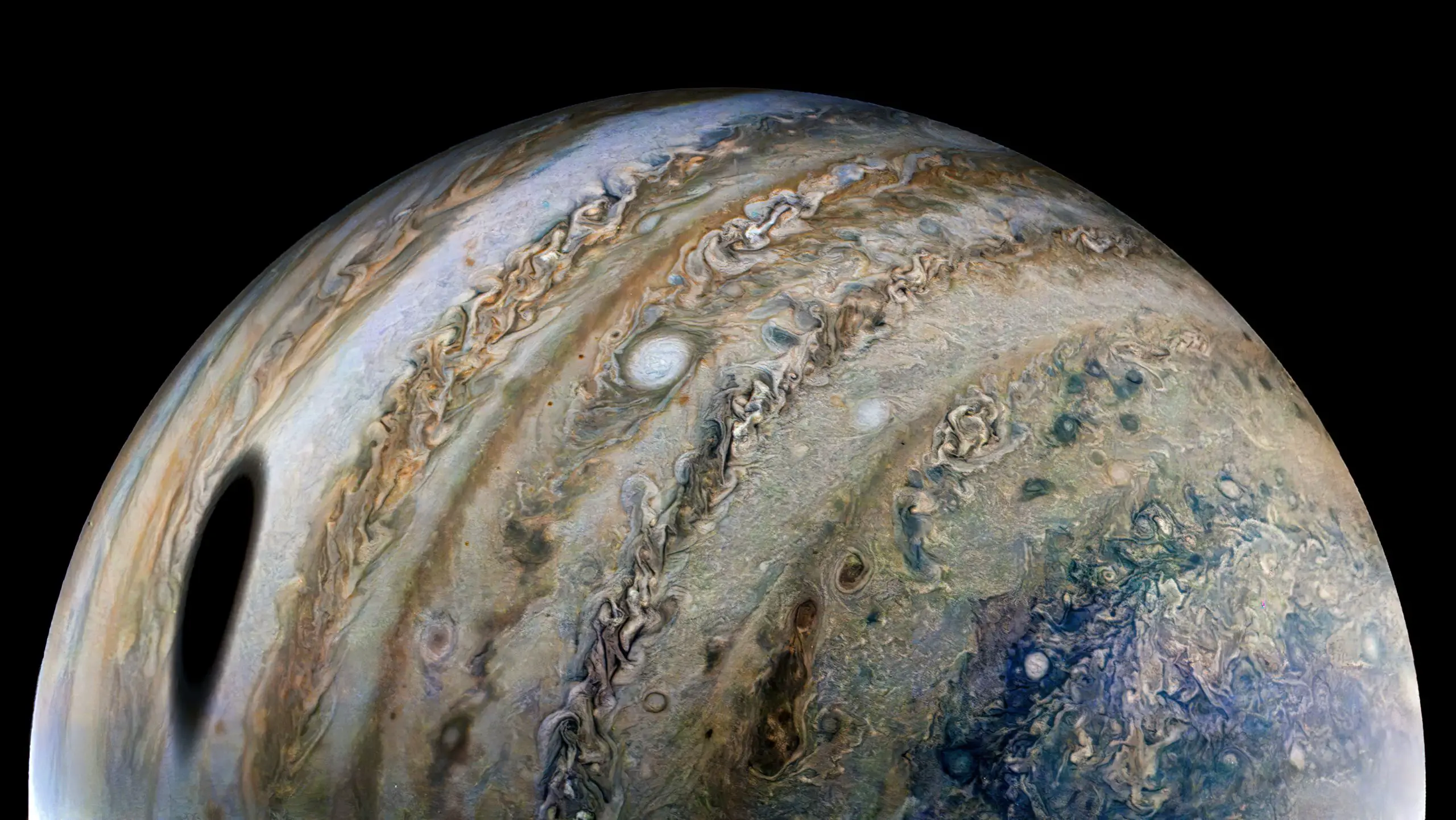Jupiter’s largest moon Ganymede casts a large shadow
In a recent Instagram post NASA released a picture where Jupiter’s largest moon Ganymede casts a large shadow on the giant gas planet. The Ganymede passed between Jupiter and the Sun causing a large shadow on Jupiter, the process is also known as a solar eclipse. Ganymede is the largest moon of Jupiter and the largest moon of the solar system.
The eclipse in Jupiter occurs frequently due to the vast number of moons. While Jupiter has many moons but three moons Ganymede, Europa and Lo are the largest moons on the Jupiter planet. The frequency of the eclipse is that Ganymede transits one time, Europa transits two times, and Lo passes four times.
Read the details of the picture of the Harvest Moon released by NASA
The Juno Mission captured this amazing picture of 71,000KM over Jupiter’s cloud. And it is 15 times closer than Ganymede. The Juno Mission is a special mission by NASA to understand the composition, gravitational field, and structure of planet Jupiter.
The image shows a black big shadow on the left side of the planet Jupiter. The surface of the gas giant displays stripes of tan, white, and blue, adorned with massive swirling storms that decorate the largest planet in our solar system.
What are Solar Eclipses and types of Solar Eclipses?

There are four types of Solar eclipse in the solar system.
- A total Solar eclipse is where a moon passes between the Sun and the Planet completely blocking the face of the sun
- An annual Solar Eclipse is an eclipse where the moon passes between the Sun and the planet but does not block the face of the sun completely
- A hybrid Solar eclipse is a situation where the eclipse shifts between annular and total as the shadow moves across the globe.
- A partial Solar eclipse is a moment when the moon passes between the sun and a planet but only some part of the sun is covered
On Earth, people will see two eclipses. The annual eclipse is on Oct 14, 2023, in the United States, Mexico, and other parts of America. The total eclipse will occur on April 8, 20234 in Mexico, Canada, and the United States.
What are your thoughts on Jupiter’s largest moon Ganymede casts a large shadow on the solar system Gas planet Jupiter?
While you comment do not forget to check how COVID Pioneers Karikó and Weissman Won the Nobel Prize Today
Share this content:



Post Comment